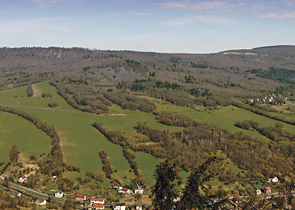The Journal is published by the Nature Conservation Agency of the Czech Republic in cooperation with the Cave Administration of the Czech Republic, the Krkonoše Mts. National Park Administration, the Bohemian Forest Mts. National Park Administration, the Podyjí National Park Administration and the The Bohemian Switzerland National Park Administration. It has been published since 1946.
cs / en
Nature Conservation 3/2013 — 9. 8. 2013 — Research, Surveys and Data Management — Print article in pdf
Čámská K., Pavlásek J., Bezděčka P., Bezděčková K., Bauer P. & Hadincová V.: Large Blue Butterflies
– co přinesl výzkum

The Scarce Large Blue (Phengaris teleius)and Dusky Large Blue (P. nausithous)are the endangered butterfly species strictly specialised in the host plant, the Red Thunder (Sanguisorba officinalis)and ants of the Myrmica species.
The main aim of the two-year study was to monitor in details both the butterfly species occurrence and their hosts in grasslands surrounding the Pod Lesem Nature Reserve, the Labské pískovce/Elbe Sandstones Protected Landscape Area, the Czech Republic. The authors studied the water regime, mowing and grazing effects on the Phengaris, Sanguisorba and Myrmica to identify the most suitable restoration management measures for planned extension of the reserve. According to the study the butterfly populations preferred irregularly mown meadows with abundant Sanguisorba population and with wet organic soil of high porosity and saturation ability. Moreover, the Myrmica species were rare at the meadow type. There were no large blue butterflies in heavily grazed and trampled pastures, generally displaying low species richness. The highest species diversity of plants, ants and butterflies was found at regularly mown meadows but the both Phengaris species were rare there. The key problem for surviving of the butterfly populations in the studied grassland complex seems to be to find an optimal management not only for the large blues but also for the host ants.

